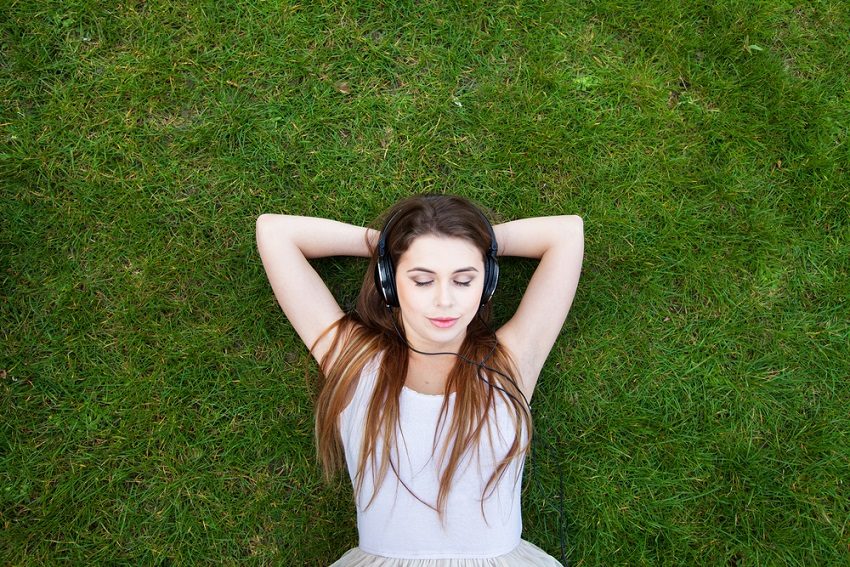Looking for 'intense relaxation'? You might like ASMR

Have you ever felt a tingle down the back of your neck after hearing someone knocking on a solid timber door? Ever had a little tremor of happiness watching someone brush long, straight hair? If so, the chances are that you’ve experienced ASMR, Autonomous Sensory Meridian Response.
ASMR is physiological response triggered by the experience of visual or auditory stimuli. The name is entirely non-scientific and was coined by Jennifer Allen, a woman who a) had experienced ASMR, b) had access to the Internet, and c) realised that the weird sensations she experienced were experienced by others but had no formal name. The name was reportedly developed from the autonomous nature of the experience, the sensory transmission of information, the euphoric nature of the experience (meridian is an old way of saying peak), and the reliable physiological response.
The response aspect of ASMR has been described as ‘tingling’ on the scalp, neck and back, sometimes extending into the limbs, combined with the experience of a sense of well-being and deep relaxation. ASMR triggers are specific to each person, reliably produce a physiological reaction, and are often social in nature. That is, they are triggered by seeing or hearing the act of another person.
Common triggers include viewing slow and repetitive movements, hearing crisp sounds like fingernails tapping, or receiving close attention or instruction from another person. The most popular trigger reported? Hearing someone quietly whispering. Seriously: check out YouTube user GentleWhispering’s videos.
So, it is kind of sounding like pseudoscientific nonsense. However, while the ASMR phenomenon hasn’t previously been the focus of a great deal of scientific research, there are a number of empirical studies emerging that legitimise the ASMR experience.
A recent paper published in Social Neuroscience is the first to examine potential neural structures underlying the experience of ASMR, and to highlight potential differences between the ‘haves’ and the ‘have nots’. The default mode network (DMN) of participants with a history of ASMR was compared to individuals with no history of ASMR and no response to common triggers.
The DMN is the brain’s resting state network and is activated when the brain is not actively engaged. This is when you daydream about yourself, or other people, or nothing at all. The DMN of the ASMR group showed different patterns of connectivity, compared to the control group. These differences were consistent with reduced attentional control and inhibition in the ASMR group, and potentially with a reduced ability to inhibit sensory-emotional experiences.
Perhaps people that can experience ASMR are just more open to experience? Or are they emotionally disinhibited? Or perhaps there are similar mechanisms involved with ASMR as there are in cases of synaesthesia?
Synaesthesia is a well-recognised neurological condition that involves a blending of the senses. That is, external stimuli are internally perceived in another, unrelated and unstimulated modality. For example, someone with synaesthesia might see letters as colours, or could experience certain tastes when presented with different words. Synaesthesia is caused by the parts of the brain responsible for processing different kinds of information becoming cross-wired.
It has been suggested that ASMR could be a form of emotional synaesthesia. That is, parts of the brain responsible for auditory or visual processing have become cross-wired with parts of the brain responsible for certain kinds of physiological and emotional arousal. It has also been suggested that the tingles associated with ASMR result from a minor, pleasant seizure induced by certain visual or auditory stimuli.
Given that the developing body of evidence in this area shows that ASMR is associated with intense relaxation, and doesn’t appear to cause harm, there could be therapeutic implications of this phenomenon. Indeed, a study published last year in PeerJ journal showed that ASMR may temporarily improve mood, relieve depressive symptoms, and reduce feelings of chronic pain. The authors acknowledge that perhaps ASMR is simply the body’s response to the mindfulness required to focus solely on the triggering stimuli, with one participant describing the ASMR state as being like “perfect meditation”.
So while the experience of ASMR is intriguing and understandably controversial, emerging work in this area indicates that there could be significant benefit and little cost to understanding more about what it is and how it works. Why not try gently whispering this article to the person sitting next to you and see what happens…